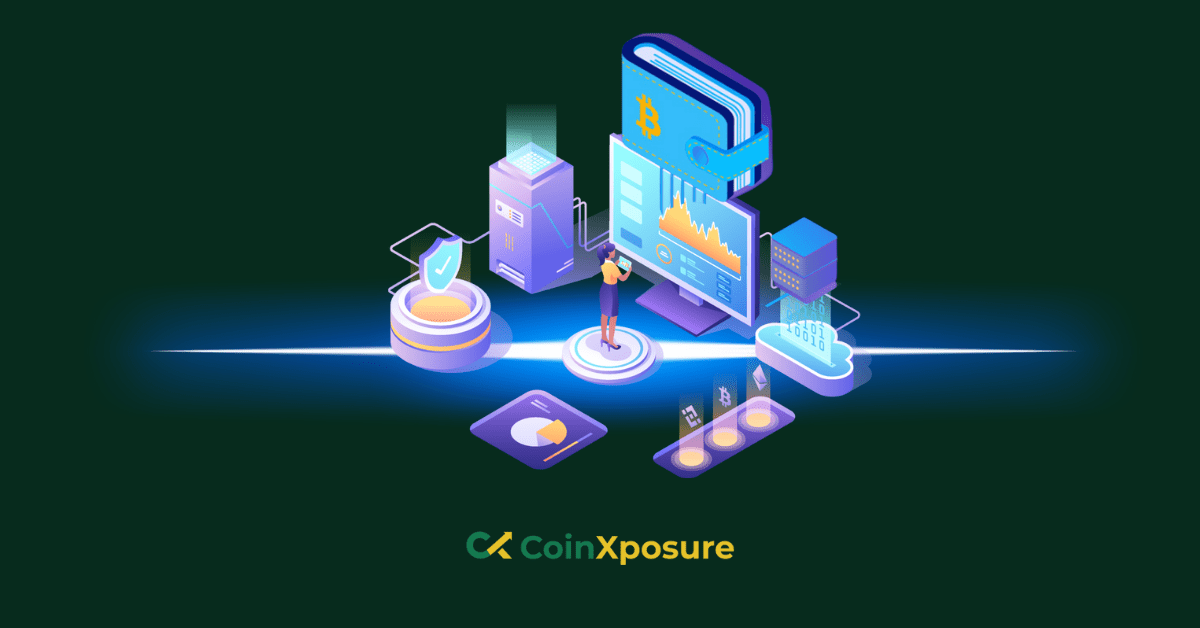
Understanding Compensation in Web3 – Tokens, Equity, and Salaries
In the rapidly evolving landscape of Web3, where decentralization, blockchain technology, and digital currencies intersect, traditional notions of compensation are being redefined.
As the Web3 ecosystem expands, it becomes increasingly important to comprehend the intricate interplay between tokens, equity, and salaries in the context of compensation.
Unlike conventional centralized models, Web3 offers novel avenues for incentivizing contributions and rewarding participation through tokenomics, equity distribution, and evolving salary structures.
This article sets the stage for a deeper exploration into the multifaceted nature of compensation in Web3, delving into the advantages, challenges, and emerging trends shaping the remuneration landscape in decentralized environments.
By understanding the dynamics of compensation in Web3, stakeholders can navigate this innovative space more effectively, fostering a symbiotic relationship between value creation and equitable reward distribution.
Tokens as Compensation in Web3
In the realm of Web3, tokens have emerged as a primary form of compensation, offering a unique mechanism for incentivizing contributions and aligning interests within decentralized ecosystems.
Unlike traditional currencies, tokens are digital assets typically built on blockchain technology, enabling programmable functionality and transparent distribution mechanisms.
Token compensation can take various forms, including airdrops, token grants, and token sales.
Airdrops involve the free distribution of tokens to individuals based on predetermined criteria, such as participation in a project or holding certain tokens.
Token grants are allocations of tokens provided to individuals or entities for specific purposes, such as funding development efforts or community initiatives.
Token sales, on the other hand, involve the purchase of tokens either through public offerings or decentralized exchanges, providing contributors with a stake in the project or platform.
The use of tokens as compensation offers several advantages. Firstly, it enables direct participation in the value creation, fostering a sense of ownership and community engagement.
Additionally, tokens often carry the potential for value appreciation, providing contributors with the opportunity for financial upside as the project grows.
Moreover, token compensation can facilitate liquidity and transferability, allowing individuals to trade or utilize tokens on secondary markets within the ecosystem.
However, token compensation also presents challenges and considerations. Regulatory uncertainty surrounding tokenomics and distribution mechanisms can pose legal risks for projects and contributors alike.
Moreover, the volatility inherent in cryptocurrency markets can lead to fluctuations in token compensation’s value, impacting recipients’ financial stability.
Additionally, token compensation may lack the stability and predictability of traditional forms of remuneration, requiring careful planning and risk management strategies.
Tokens play a central role in the compensation landscape of Web3, offering a decentralized and programmable means of rewarding contributions and incentivizing participation.
While token compensation presents unique opportunities for value creation and engagement, it also requires careful navigation of regulatory, financial, and technological considerations to ensure equitable and sustainable reward distribution within decentralized ecosystems.
Equity as Compensation in Web3
Equity, traditionally associated with ownership stakes in companies, has found a new dimension in the decentralized landscape of Web3.
Equity refers to ownership or participation rights in decentralized projects, protocols, or decentralized autonomous organizations (DAOs).
Equity compensation in Web3 typically involves the distribution of tokens representing ownership or governance rights within these decentralized entities.
The equity distribution in Web3 can occur through various mechanisms, including equity grants and vesting schedules.
Equity grants allocate ownership tokens to individuals or entities based on their contributions, role, or investment in a project.
Vesting schedules regulate the release of equity tokens over time, ensuring that recipients remain engaged and aligned with the long-term success of the project.
There are several advantages to equity compensation in Web3. Firstly, it aligns incentives between stakeholders, as ownership tokens grant holders a direct stake in the success and governance of the project.
This alignment of interests can foster collaboration, innovation, and community engagement within decentralized ecosystems.
Additionally, equity compensation offers the potential for significant value creation, as successful projects may generate substantial returns for equity holders.
However, equity compensation in Web3 also presents challenges and considerations.
One significant challenge is the lack of liquidity associated with equity tokens, as decentralized markets for trading ownership stakes may be less developed or accessible compared to traditional stock markets.
This lack of liquidity can limit the ability of equity holders to monetize their holdings or diversify their investment portfolios.
Furthermore, concerns about dilution and governance rights may arise in decentralized projects where ownership tokens are distributed among a large and diverse group of stakeholders.
Balancing the interests of various equity holders while maintaining the decentralized and democratic nature of governance mechanisms can be a complex and evolving process.
Equity compensation plays a crucial role in incentivizing participation and aligning interests within Web3 ecosystems.
By distributing ownership or governance rights to contributors, projects can foster a sense of ownership, commitment, and collaboration among stakeholders.
However, navigating the challenges associated with equity compensation, such as liquidity, dilution, and governance, requires careful consideration and strategic planning to ensure equitable and sustainable reward distribution within decentralized communities.
Salaries in Web3
While tokens and equity represent innovative forms of compensation within Web3 ecosystems, traditional salary structures also play a significant role in remunerating contributors and supporting the growth of decentralized projects and organizations.
Salaries in Web3 encompass various forms of monetary compensation, often tailored to accommodate the unique dynamics of decentralized work environments and the global nature of blockchain technology.
In the context of Web3, salaries may be structured differently from traditional employment models, reflecting the distributed and often remote nature of work within decentralized projects.
Remote work dynamics are prevalent in Web3, with contributors and teams dispersed across geographical boundaries, collaborating asynchronously through digital platforms and communication tools.
As such, Web3 salaries may be flexible and adaptable to accommodate remote work arrangements, offering contributors the freedom to work from anywhere while still receiving competitive compensation.
Moreover, performance-based compensation models are common in Web3, reflecting the meritocratic principles inherent in decentralized ecosystems.
Contributors may receive bonuses or incentives based on the quality and impact of their work, as well as the achievement of specific milestones or objectives within the project or organization.
Performance-based compensation fosters a culture of accountability, innovation, and results-driven collaboration within decentralized communities, incentivizing contributors to deliver value and drive the success of the project.
Despite the prevalence of tokens and equity as alternative forms of compensation in Web3, salaries remain essential for supporting contributors’ livelihoods and ensuring financial stability.
Unlike tokens, which may fluctuate in value and liquidity, salaries provide a stable and predictable source of income for contributors, enabling them to cover living expenses, support their families, and plan for the future.
Salaries also offer contributors the flexibility to diversify their financial portfolios and manage their personal finances in a manner that suits their individual needs and preferences.
While tokens and equity represent innovative compensation mechanisms within Web3 ecosystems, salaries continue to play a crucial role in supporting contributors and fostering sustainable growth within decentralized projects and organizations.
By offering competitive and flexible salary structures, Web3 projects can attract and retain top talent, drive innovation, and create value for stakeholders while empowering contributors to thrive in the decentralized economy of the future.
Hybrid Compensation Models in Web3:
Hybrid compensation models represent a convergence of traditional salary structures with innovative forms of compensation such as tokens and equity, offering a balanced approach to rewarding contributors within decentralized ecosystems.
These models recognize the diverse needs and preferences of contributors while leveraging the benefits of both monetary and non-monetary incentives to drive engagement, alignment, and value creation.
One example of a hybrid compensation model is the combination of salaries with token or equity grants.
In this model, contributors receive a base salary for their work, providing financial stability and predictability and additional compensation in the form of tokens or equity grants.
This hybrid approach allows contributors to benefit from both immediate financial rewards and long-term incentives tied to the success of the project or organization.
Another example is the integration of performance-based bonuses or incentives into salary structures.
Contributors may receive bonuses or rewards based on the achievement of specific milestones, the quality of their work, or the overall performance of the project or organization.
These performance-based incentives complement base salaries, motivating contributors to deliver exceptional results and drive the success of the project while aligning their interests with those of the broader community.
Furthermore, hybrid compensation models may involve the utilization of decentralized autonomous organizations (DAOs) or smart contracts to facilitate the distribution of tokens or equity to contributors.
DAOs enable decentralized decision-making and governance, allowing contributors to collectively determine the allocation of rewards based on transparent and programmable rules encoded in smart contracts.
By leveraging DAOs and smart contracts, hybrid compensation models can enhance transparency, accountability, and fairness in reward distribution while reducing administrative overhead and manual intervention.
The adoption of hybrid compensation models reflects the evolving nature of work and value creation in Web3, where contributors seek a combination of financial rewards, ownership, and autonomy in their engagement with decentralized projects and organizations.
By embracing hybrid compensation models, Web3 projects can attract and retain top talent, foster collaboration and innovation, and create sustainable ecosystems that drive long-term value for all stakeholders involved.
Hybrid compensation models offer a flexible and adaptive approach to rewarding contributors within Web3 ecosystems, combining traditional salary structures with innovative forms of compensation such as tokens, equity, and performance-based incentives.
By striking a balance between monetary and non-monetary rewards, hybrid compensation models empower contributors to thrive in the decentralized economy of the future while driving the success and growth of Web3 projects and organizations.
Legal and Regulatory Considerations in Web3 Compensation
As Web3 ecosystems continue to evolve, legal and regulatory considerations surrounding compensation become increasingly important.
Given the decentralized and global nature of blockchain technology, navigating legal frameworks and compliance requirements presents unique challenges for projects, contributors, and stakeholders involved in Web3 compensation models. Several key considerations include:
- Regulatory Uncertainty
- Securities Laws
- Tax Implications
- Employment Laws
- Anti-Money Laundering (AML) and Know Your Customer (KYC) Requirements
Regulatory Uncertainty
The regulatory landscape surrounding cryptocurrencies, tokens, and decentralized finance (DeFi) remains complex and rapidly evolving.
Projects must stay abreast of regulatory developments and seek legal guidance to ensure compliance with relevant laws and regulations in jurisdictions where they operate or distribute tokens.
Securities Laws
Tokens distributed as compensation may be subject to securities regulations in various jurisdictions, particularly if they confer ownership rights, dividends, or voting rights to holders.
Projects must carefully assess whether token compensation constitutes a security under applicable laws and comply with registration, disclosure, and investor protection requirements accordingly.
Tax Implications
Compensation received in the form of tokens or equity may have tax implications for recipients, including income tax, capital gains tax, and reporting requirements.
Projects should provide clear guidance and resources to contributors regarding the tax treatment of token or equity compensation and ensure compliance with tax laws in relevant jurisdictions.
Employment Laws
Web3 projects employing contributors on a full-time or part-time basis may be subject to employment laws and regulations governing wages, benefits, working conditions, and employment contracts.
Projects should adhere to applicable labor laws and consult legal counsel to ensure compliance with employment regulations in the jurisdictions where they operate.
Anti-Money Laundering (AML) and Know Your Customer (KYC) Requirements
Web3 projects distributing tokens or engaging in token sales may be subject to AML and KYC regulations designed to prevent money laundering, terrorist financing, and illicit activities.
Projects should implement robust AML and KYC procedures to verify the identity of token recipients and monitor transactions for suspicious activity.
Legal and regulatory considerations play a crucial role in shaping Web3 compensation models and ensuring compliance with applicable laws and regulations.
Projects must proactively address these considerations, seek legal advice when necessary, and adopt best practices to mitigate legal risks and build trust with stakeholders in the decentralized ecosystem.
By prioritizing legal compliance and regulatory transparency, Web3 projects can foster a sustainable and responsible approach to compensation that promotes innovation, integrity, and legal certainty in the decentralized economy.
Future Trends and Predictions in Web3 Compensation
Here are some future trends and predictions in Web3 compensation:
- Increased Regulatory Clarity
- Evolution of Tokenomics
- Rise of Decentralized Autonomous Organizations (DAOs)
- Integration of Decentralized Finance (DeFi)
- Expansion of Tokenization
Increased Regulatory Clarity
As the Web3 ecosystem matures, regulators are likely to provide greater clarity and guidance on the legal and regulatory treatment of tokenomics, equity distribution, and other forms of compensation within decentralized ecosystems.
This increased regulatory clarity will help mitigate legal risks and foster greater stakeholder confidence and participation.
Evolution of Tokenomics
Tokenomics, the economic design and distribution of tokens within decentralized projects, will continue to evolve to address scalability, sustainability, and governance challenges.
Future trends may include more sophisticated token distribution mechanisms, novel incentive structures, and innovative approaches to token utility and governance.
Rise of Decentralized Autonomous Organizations (DAOs)
DAOs, autonomous and decentralized entities governed by smart contracts and token holders, will play an increasingly prominent role in Web3 compensation models.
Future trends may include the widespread adoption of DAOs for decision-making, reward distribution, and governance within decentralized communities.
Integration of Decentralized Finance (DeFi)
DeFi protocols and platforms will become integral components of Web3 compensation models, enabling efficient and transparent management of token and equity assets.
Future trends may include the integration of DeFi tools for yield generation, liquidity provision, and decentralized exchange within compensation structures.
Expansion of Tokenization
Tokenization, the representation of real-world assets as digital tokens on blockchain networks, will expand beyond cryptocurrencies to encompass a wide range of assets, including securities, commodities, and intellectual property.
Future trends may include the tokenization of traditional assets for compensation purposes, enabling fractional ownership and enhanced liquidity for contributors.
The future of Web3 compensation is characterized by innovation, decentralization, and alignment with the principles of blockchain technology.
As the ecosystem evolves, stakeholders can expect to see greater regulatory clarity, advancements in tokenomics and governance, integration with DeFi, expansion of tokenization, adoption of decentralized identity solutions, and growth of remote work and global collaboration within decentralized communities.
By embracing these trends and innovations, Web3 projects can build more inclusive, transparent, and sustainable compensation models that empower contributors and drive the continued growth and adoption of decentralized technologies.
Conclusion
Understanding compensation in Web3 is crucial for navigating the rapidly evolving landscape of decentralized ecosystems.
In this exploration, we’ve delved into the various forms of compensation, including tokens, equity, and salaries, each playing a unique role in incentivizing contributions and aligning interests within decentralized projects and organizations.
Tokens serve as programmable and decentralized incentives, offering contributors the opportunity to directly participate in the value creation process and engage with the community.
However, regulatory uncertainty and market volatility pose challenges that must be carefully navigated to ensure equitable and sustainable token compensation.
Equity represents ownership and governance rights within decentralized entities, fostering alignment of interests and long-term commitment among stakeholders.
While offering potential for significant value creation, equity compensation requires careful consideration of liquidity, dilution, and governance concerns.
By understanding and embracing the complexities of compensation in Web3, stakeholders can navigate this innovative space more effectively, fostering a symbiotic relationship between value creation and equitable reward distribution within decentralized ecosystems.
As the Web3 revolution continues to unfold, the evolution of compensation models will play a pivotal role in shaping the decentralized economy of the future.





